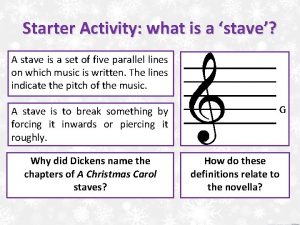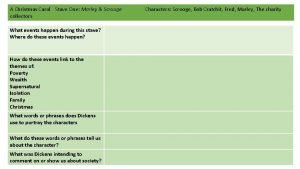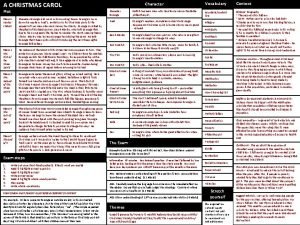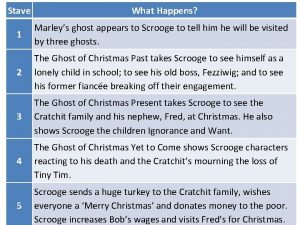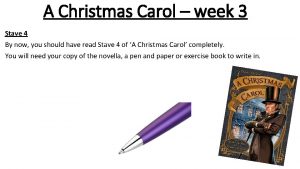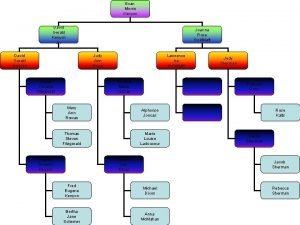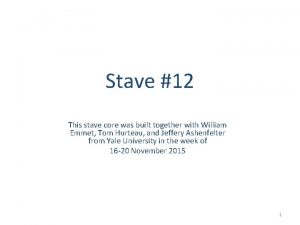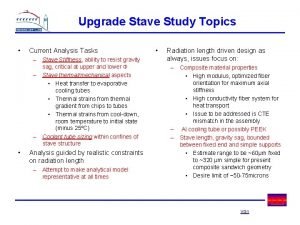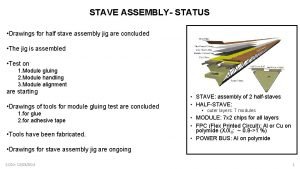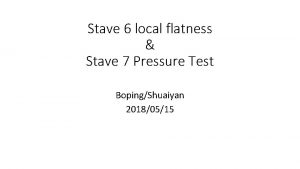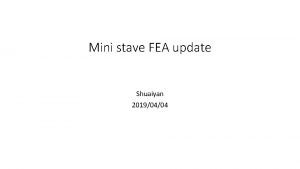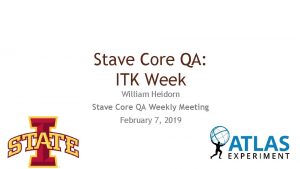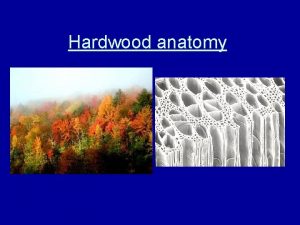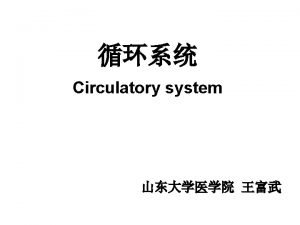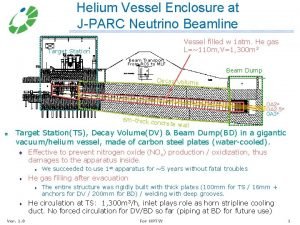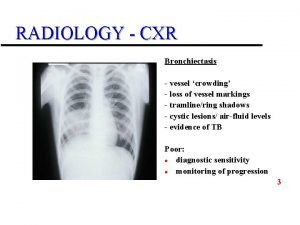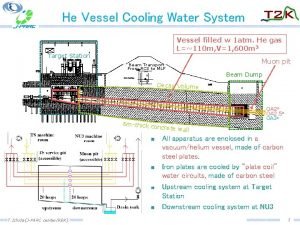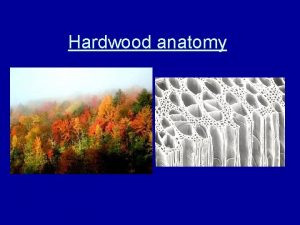Stave Vessel Design Construction Tom Kenyon May 2012



















- Slides: 19

Stave Vessel Design & Construction Tom Kenyon May 2012

The Art of Segmented Wood Turning By Malcolm Tibbetts • • 10” is too Tall - looking for about 6” 6/4 wood required for staves prefer 4/4 2

First Prototype • Symmetrically scaled plan to 6” high • Simplified construction – Eliminated veneer layers – Eliminated multi layers splines 3

Revised Design • • • Prototype too round Top out of proportion to the body Center divider too thick Created lip for top/body joint Second prototype looked good 4

Parts Neck Top Separator Splines Staves Bottom 5

Stave Cutting Jig Based on Replaceable Throat Sled My Friend! 6

Stave Cutting Jig First Ten Vessels 7

Dedicated Segment Cutting Sled Designed to accommodate Bridge City Tool’s Angle Master – Large rear fence opening – Removable segment slide 8

Vessel Holding Fixture • Used for; – Initial glue up of staves – Initial turning of the base – Final turning of the base • • Design from PBS TV show and Malcolm Tibbetts book Duct tape help donuts slide 9

Ring Sanding Jig • • Shown previously in Show-n-Tell Descriptive article posted on Segmentedwoodturners. org 10

Templates • • Templates cut of 1/16” plastic on the laser Outside only one that proved useful 11

Production • Production of 20 broken into three groups - 10, 5, and 5 – Manageable number of parts – Doable task - not overwhelming – Assessed mix after each group • Wood combinations that worked or didn’t work • Appropriate mix • Available material • Timeline (best recollection) – Design started late Sep, done by third week of Nov – Lots of time finding material (tops) and making prototypes, jigs, and templates • Four weeks to the first prototype – One to two days to prepare material - almost independent of number of vessels – Two vessels going simultaneously – About a day for each 12

Parts Preparation 13

Parts Assembly and Glue up 14

Top • • Top opening drilled after finishing - fits tailstock plug - helps alignment during glue up Inside finished with shellac 15

Base/Bottom • • • Lots spinning ! Slow is OK Watch out for those bolt ends! Inside bottom base cut to blend in with bottom plug, also gives reference for turning inside 16

Turning Base Inside & Outside • • Trick is getting a tight fit with top Inside finished with shellac 17

Finishing the Vessel Last step is to make plug to center vessel’s top on the jig 18

All Done ! • • Used General Finishes sealer and oil/urethane Buffed with brown paper sack after a week 19
 Vessel 2012
Vessel 2012 Pete kenyon
Pete kenyon Kenyon qualtrics
Kenyon qualtrics Kenyon endowment
Kenyon endowment Kenyon walker
Kenyon walker Mark kenyon net worth
Mark kenyon net worth Kenyon qualtrics
Kenyon qualtrics Simon kenyon 68 instagram
Simon kenyon 68 instagram Ksol uk
Ksol uk Tom tom go 910
Tom tom go 910 The devil and tom walker symbols
The devil and tom walker symbols A christmas carol starter activities
A christmas carol starter activities Stave 5 a christmas carol
Stave 5 a christmas carol Stave definition literature
Stave definition literature Christmas carol stave 1 summary
Christmas carol stave 1 summary Christmas carol summary stave 1
Christmas carol summary stave 1 Bob cratchit quotes
Bob cratchit quotes Stave 4 a christmas carol
Stave 4 a christmas carol Christmas carol stave 4 summary
Christmas carol stave 4 summary Electrical stave
Electrical stave











